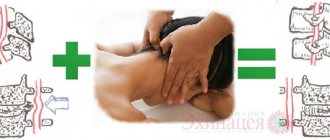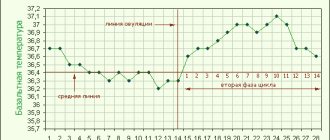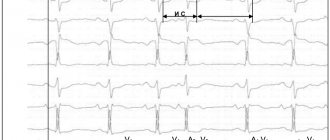- home
- Neurology
- Intracranial hypertension
—
—
Intracranial hypertension is increased pressure in the cranial cavity. It is observed when the outflow of cerebrospinal fluid (CSF) is impaired. Severe intracranial hypertension can be caused by head trauma, stroke, or a tumor of the central nervous system. In addition, benign intracranial hypertension is common, in which the pressure of the cerebrospinal fluid is constantly increased, but not so much as to provoke a sharp deterioration in the patient’s condition.
Hospitalization of patients. Daily. Around the clock
9,500 patients trust us annually.
Call your doctor now!
Causes
The main category of patients with benign intracranial hypertension are women aged 30-50 years who are obese. In them, pathology is detected 12 times more often compared to the average in the population.
The disease can also develop at any other age, including men. Its causes and risk factors:
- endocrine pathologies;
- systemic connective tissue diseases;
- infectious lesions of the membranes of the brain;
- previous head injuries;
- obesity;
- thrombosis of the venous sinuses of the dura mater;
- chronic kidney disease;
- heavy metal poisoning;
- taking antibiotics, glucocorticoids.
If a cause can be found, intracranial hypertension is considered secondary. If the etiological factor is not identified during the examination, intracranial hypertension is called idiopathic.
Our expert in this field:
Shakhnovich Viktor Alexandrovich
Neurologist, MD
Doctor of Medical Sciences
Experience: More than 33 years
Call the doctor
Call the doctor
Pathogenesis
The human brain is located inside the cranium - it is a closed space with rigid walls, in which approximately 80% of the volume is occupied by the brain matter itself, about 15% is cerebrospinal fluid, and the remaining 5% is drained by blood. Cerebrospinal fluid (CSF) is produced in special choroid plexuses; it constantly circulates between the ventricles of the brain and the subarachnoid space, where it is absorbed into the venous sinuses. Liquor performs a protective and nutritional function, and also creates a certain pressure on the walls of the skull and brain structures.
Normally, ICP (intracranial pressure) is not felt by a person; its value ranges from 3 to 15 mm Hg. Art. When coughing, straining, lifting heavy objects or screaming, a short-term increase in ICP may occur, which disappears after the person returns to its original state.
A persistent and prolonged increase in ICP leads to the exhaustion of the body's compensatory capabilities, and chronic intracranial hypertension develops. This happens when the normal relationships of all components of the cranium are disrupted (for example, due to an increase in the amount of cerebrospinal fluid, disruption of venous outflow, the appearance of edema or pathological volumes in the brain substance, etc.). It is impossible to measure intracranial (intracranial) pressure under normal conditions, unlike blood pressure; this can only be done during a neurosurgical operation or during a spinal puncture.
A pronounced increase in pressure in the confined space of the skull causes the development of a condition called intracranial hypertension syndrome. This pathology is dangerous because, as a result of compression of the medulla, a disorder of metabolic processes in neurons develops; dislocation (displacement) of individual brain structures can occur, up to the wedging of the cerebellum and medulla oblongata into the foramen magnum, with subsequent disruption of vital functions.
Symptoms
Headache is the main symptom observed in 90% of patients with intracranial hypertension. It may have a pulsating character. Some patients complain of pain without a clear localization, others suffer from pain in the orbital area. It mainly appears or intensifies in the morning.
Other symptoms:
- 58% of patients develop tinnitus that resembles a whistle;
- Every third patient has an inability to coordinate a sideways gaze due to impaired function of the abducens nerves;
- nausea is observed in 20% of patients;
- dizziness occurs in 25% of patients.
High cerebrospinal fluid pressure leads to stagnant changes in the fundus. They appear especially often in patients whose intracranial hypertension is caused by thrombosis of the venous sinuses. In 50% of them, hemorrhages in the fundus are detected. They are also found in 20% of patients with endocrine disorders. Over time, visual acuity and visual fields may decrease.
Send documents by email The possibility of treatment will be considered by the head of the neurology department, neurologist Roman Viktorovich Shakhnovich
Complications
The brain is a vulnerable organ. Prolonged compression leads to atrophy of the nervous tissue, which means that mental development and the ability to move suffer, and autonomic disorders occur.
If you do not contact a specialist in time, compression will occur. The brain may be forced into the foramen magnum or into the notch of the tentorium cerebellum. This compresses the medulla oblongata, where the centers of respiration and circulation are located. This will lead to the death of a person. Pressing into the notch of the tentorium is accompanied by constant drowsiness, yawning, breathing becomes deep and rapid, the pupils are noticeably constricted. Wedging of the hippocampal hook occurs, a symptom of which is dilation of the pupil or the absence of a light reaction on the side of the damage. An increase in pressure will lead to dilation of the second pupil, disruption of the breathing rhythm and coma.
High intracranial pressure is always accompanied by loss of vision due to compression of the optic nerve.
Diagnostics
To examine patients with suspected intracranial hypertension, the following methods are used:
- ophthalmological examination, including assessment of the condition of the fundus;
- MRI of the brain;
- cerebrospinal fluid puncture - if signs of increased intracranial pressure are detected according to MRI results.
Instrumental studies, such as MRI or ultrasound, can help suspect intracranial hypertension, as well as exclude other causes of the patient’s symptoms. But the final diagnosis can only be established by measuring the pressure of the cerebrospinal fluid based on the results of the puncture. It exceeds the normal value and is 200-400 mm aq in most patients. Art., and in a third of patients it exceeds 400 mm aq. Art., including in 10% of patients the pressure reaches 500 mm aq. Art. and more.
Intracranial hypertension (intracranial hypertension, increased intracranial pressure)
Conservative treatment of cerebrospinal fluid hypertension is carried out when it is residual or chronic in nature without pronounced progression, in acute cases - with a slow increase in ICP, there is no evidence of dislocation syndrome and serious disorders of consciousness. The basis of treatment is diuretic pharmaceuticals. The choice of drug is dictated by the level of ICP. In acute and severe cases, mannitol and other osmodiuretics are used; in other situations, the drugs of choice are furosemide, spironolactone, acetazolamide, hydrochlorothiazide. Most diuretics should be used in conjunction with the administration of potassium preparations (potassium aspartate, potassium chloride).
At the same time, the causative pathology is treated. For infectious-inflammatory lesions of the brain, etiotropic therapy is prescribed (antiviral drugs, antibiotics), for toxic ones - detoxification, for vascular ones - vasoactive therapy (aminophylline, vinpocetine, nifedipine), for venous stagnation - venotonics (dihydroergocristine, horse chestnut extract, diosmin + hesperidin) etc. To maintain the functioning of nerve cells in conditions of intracranial hypertension, neurometabolic agents (gamma-aminobutyric acid, piracetam, glycine, pig brain hydrolysate, etc.) are used in complex therapy. Cranial manual therapy can be used to improve venous outflow. In the acute period, the patient should avoid emotional overload, avoid working at the computer and listening to audio recordings with headphones, sharply limit watching movies and reading books, as well as other activities that put strain on the eyesight.
Surgical treatment of intracranial hypertension is used urgently and planned. In the first case, the goal is to urgently reduce ICP to avoid the development of dislocation syndrome. In such situations, neurosurgeons often perform decompressive craniotomy and, if indicated, external ventricular drainage. Planned intervention aims to eliminate the cause of increased ICP. It may involve removal of an intracranial space-occupying lesion, correction of a congenital anomaly, elimination of hydrocephalus using cerebral shunting (cystoperitoneal, ventriculoperitoneal).
Forecast and prevention of intracranial hypertension
The outcome of liquor-hypertensive syndrome depends on the underlying pathology, the rate of increase in ICP, the timeliness of therapy, and the compensatory abilities of the brain. With the development of dislocation syndrome, death is possible. Idiopathic intracranial hypertension has a benign course and usually responds well to treatment. Long-term liquor hypertension in children can lead to delayed neuropsychic development with the formation of debility or imbecility.
The development of intracranial hypertension can be prevented by the prevention of intracranial pathology, timely treatment of neuroinfections, discirculatory and liquorodynamic disorders. Preventive measures include maintaining a normal daily routine, rationing work; avoiding mental overload; adequate management of pregnancy and childbirth.
Book your room today
6 seats
1 local ward
- 4 meals a day
- Bathroom in the room
- Anti-decubitus mattresses
8200 rub.
Book
13 places
2 local ward
- 4 meals a day
- Bathroom in the room
- Anti-decubitus mattresses
5700 rub.
Book
2 seats
VIP chamber
- a guest room
- 4 meals a day
- Bathroom in the room
- Anti-decubitus mattresses
17700 rub.
Book
6 seats
1 local ward
- 4 meals a day
- Bathroom in the room
- Anti-decubitus mattresses
8200 rub.
Book
13 places
2 local ward
- 4 meals a day
- Bathroom in the room
- Anti-decubitus mattresses
5700 rub.
Book
2 seats
VIP chamber
- a guest room
- 4 meals a day
- Bathroom in the room
- Anti-decubitus mattresses
17700 rub.
Book
Reviews
16.11.2021
Oncology clinic NACFF. The real story about “not giving a damn”
In 2021, on August 16, my older sister flew to Lobnya to undergo examination and, if necessary, treatment at the NACFF oncology clinic.
She lives in the capital Kyrgyzstan...
Read full review
27.10.2021
At the clinic, like at home
30.09.2021
Feedback on the treatment of ovarian cancer at the NACFF clinic
07.09.2021
NACFF patient about treatment, quick examinations and attentive attitude
View all reviews
Hospital, hospitalization, emergency medical care - 24/7, 7 days a week
+7 (495) 259-44-44
Treatment
Therapy is usually medication. The use of a group of pharmaceuticals is indicated.
- Diuretics. Diuretics are prescribed to quickly relieve attacks. They are also used systematically as part of therapy. The most actively prescribed thiazide names (Hypothiazide and others). Loops are indicated in acute cases (Furosemide and analogues).
Caution:
Concomitant use of potassium-sparing medications is recommended to negate the removal of electrolytes.
- Cerebrovascular. To normalize brain nutrition. Piracetam as the main one. It is possible to prescribe Actovegin. If there is no intolerance to the drug.
- Nootropics. Accelerate metabolic processes in cerebral structures. Glycine, Phenibut. You cannot take them without permission, especially if there are brain tumors.
- Venotonics. For blood stagnation (medicines based on diosmin and hesperidin).
Massage also worked well. It is carried out by a qualified specialist and forms part of a comprehensive treatment.
In urgent cases, surgery for direct drainage and removal of excess fluid is possible. This is a last resort. This procedure is carried out in a neurosurgical department.










